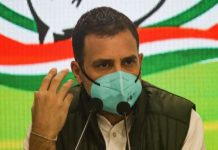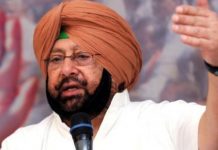It helped enormously that Singh’s image in a decade-long political career in high office had been spotless: seemingly incorruptible, he had twice resigned on principle. As finance minister under Gandhi, he had arrested mighty industrialists who allegedly evaded taxes. When shunted to the defence ministry, Singh had begun snooping around for likely corruption. To this day, Singh remains the only prime minister given support contemporaneously by both the Hindu Right and the ideological Left.
But Modi has none of the luck and the circumstances that favoured Singh a quarter century ago. It hardly bears repetition that Modi’s candidature has divided the Indian society on sectarian lines with India’s nearly 180 million Muslims fearful of his chances. The killing of some 2,000 Muslims in 2002 in Gujarat on his watch as chief minister is still unresolved, legally, emotionally and politically. In the Muslim mind, Modi either directly connived with that massacre or held back the police to let zealots linked to the Hindu supremacist RSS, to which Modi has belonged for decades, kill Muslims. If this was only about the Muslim vote for the BJP, it would not worry Modi. In fact, he would likely cultivate that image — of The One Who Put Down The Muslims — that helped him win the 2002 and the 2007 Gujarat Assembly polls. But, the BJP is unlikely to fetch 272 Lok Sabha seats, a simple majority, by itself and would need other anti- Congress parties.
Modi’s Toxic stock vis-á-vis the Muslims has made him a pariah with potential allies such as West Bengal Chief Minister Mamata Banerjee, Bihar Chief Minister Nitish Kumar, Samajwadi Party chief Mulayam Singh Yadav and Bahujan Samaj Party supremo Mayawati. The four potentially can offer anything between 60- 90 seats to the next coalition government, but none of them can accept Modi as prime minister. The reason is that each owes his or her success to a solid Muslim backing, and they would not want 2014 to be the last election they win. The only parties that won’t mind backing Modi as prime minister would be the Akali Dal in Punjab and the Shiv Sena from Maharashtra, and, perhaps, either of the Dravidian parties in Tamil Nadu. Add to that a smattering of independents, and Modi could still fall short by 30-odd seats in his quest.
Which brings us back to the content of Modi’s four speeches this week, three of which were made before captains of industry, their wives and other movers and shakers. Pontiff, pedagogic and preacher in parts, Modi’s speeches kept miles away from subjects that have traditionally been the BJP’s staple: he made no reference to anti-India terrorism bred in Pakistan or threats to India’s internal security. Surprisingly, Modi even sidestepped the string of corruption scandals that have engulfed Prime Minister Manmohan Singh’s government over the past two years, including the alleged siphoning of hundreds of billions of dollars in the sale of coal mines and telecom licences. Modi made no reference to Congress president Sonia Gandhi, neither for her being an Italian by birth, which once the BJP said disqualified her to lead India, nor to her overlordship over Prime Minister Singh. Any time Modi mentioned the prime minister, it was only to express exasperation over an alleged policy paralysis in New Delhi that delays decision-making. Modi’s only message: India needs good governance and I alone can give it.
Indeed, for sheer breadth and variety, the sweep of Modi’s speeches given since the weekend must be unmatched by any political speeches in recent decades, save perhaps the prime ministerial invocations from the ramparts of the Red Fort on Independence Day. Look at the subjects Modi spoke of: female infanticide and foeticide; women empowerment, including through right to property, skill development, vocational training; business acumen of Indians; financial grants for villages; tribal economic structures; cooperative dairy farming; solar energy; tourism on an upswing in his state; Centre-state relations (by referring to two panel reports three decades apart); power companies that cut back losses and turned a profit; cultivable agricultural land that shot up by nearly two million hectares; industrial planning and development; purchasing power; soil health; micro-irrigation; agricultural technological upgrade; grain policy; cotton exports; cattle camps that eradicated diseases; value-addition chains such as warehouses and cold storages; and even a muscular foreign policy for South Asia!










